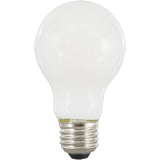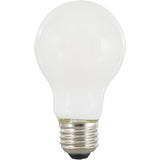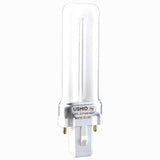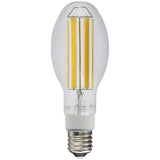SAD Days Ahead for Those Who Crave Daylight
Posted by Dave on for ProLampSales
For some people, the seasonal onset of fewer hours of daylight means dealing with seasonal affective disorder (SAD). Since the early 1970's when some initial research was done, many studies have confirmed that, in some people, there is a bio-chemical connection between exposure to daylight and depression.
The Science of SAD
The optic nerve carries light into the brain for visual processing. It also takes a turn into the hypothalmus - specifically, into a region called the superchiasmatic nucleus.
The light that reaches the superchiasmatic nucleus causes reactions affecting among other things the sleep cycle - circadian rhythms. Early morning exposure to daylight (most importantly the blue part of the daylight spectrum) regulates production of the chemical melatonin. Imbalances in melatonin can lead to sleep cycle problems as well as problems with other chemicals that may lead to depression.
The solution (for some people)
Research shows that any light source (preferrably daylight) at 10,000 lux (1000 footcandles) aimed toward the eye for 30 minutes a day, can be effective. Light sources with a strong blue wavelength component are most effective. Light bulbs marketed as "full spectrum" usually meet this standard, although it is not necessary that light be full spectrum nor is it necessary to purchase pricey light boxes to make them work.
Any electric light bulb with a color temperature of 5000K or higher also meets this standard. Many different wattages of compact fluorescent bulbs and LED bulbs that screw into a standard socket as well as long tube fluorescent bulbs are manufactured that meet the 5000K or higher threshold... and they are not very expensive. You can get more information on the color temperature of light and also see examples of 5000K+ bulbs.
Color rendering is another important factor with full spectrum bulbs. A CRI of 90 or above is recommended, especially in the case of fluorescent lamps. This is because some phosphors used in fluorescent bulbs may emit light with a color temperature of 5000K, but only that limited spectrum. This usually results in a lower CRI, where blending several phosphors gives a fuller spectrum of light, while keeping the overall color temperature of 5000K.
It should be noted that simply screwing the bulbs into an existing ceiling fixture or table lamp may not result in the beneficial aspects of full spectrum light. Being too far away from the light source means that it is not aimed directly enough at the eyes. This is one reason light therapy boxes have been combined with alarm clocks in some cases, to ensure enough light hits the eyes early in the morning.
By the way, most people do not have problems with melatonin production regulation even in the darkest days of winter, and there is no research that suggests that treatment with light for non-depressives will lead to any therapeutic benefits for the public at large.
Finally, light can be part of an overall plan of wellbeing and health. Even beyond treating SAD, proper use of light can promote better sleep or encourage wakefulness during the daytime.
- Posted in Health
Featured Products (View All)
0 Comments




